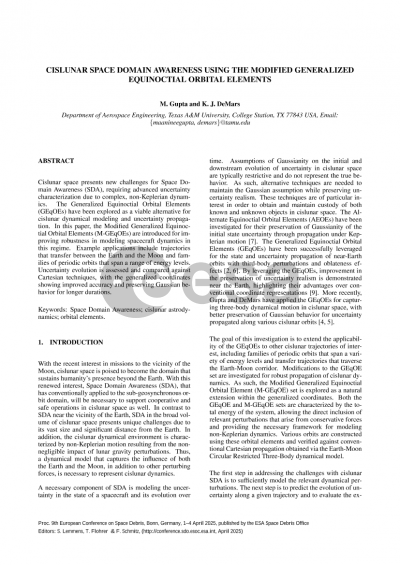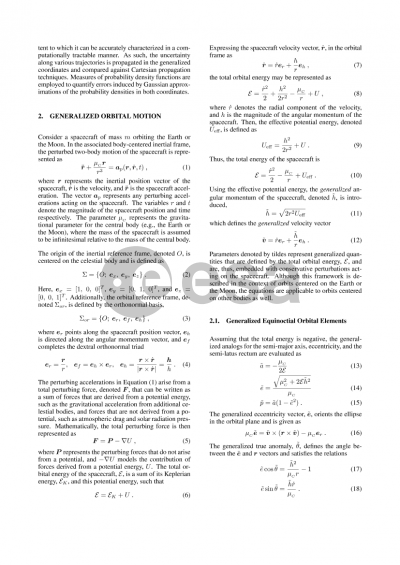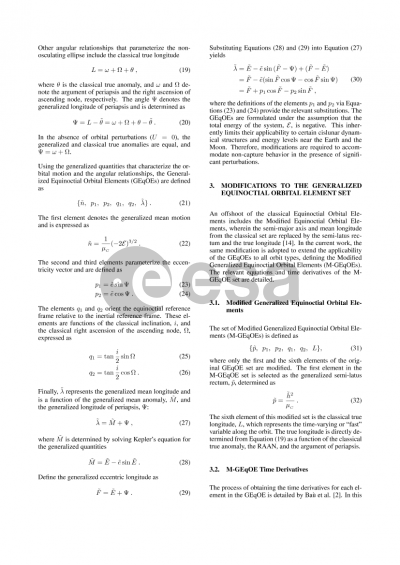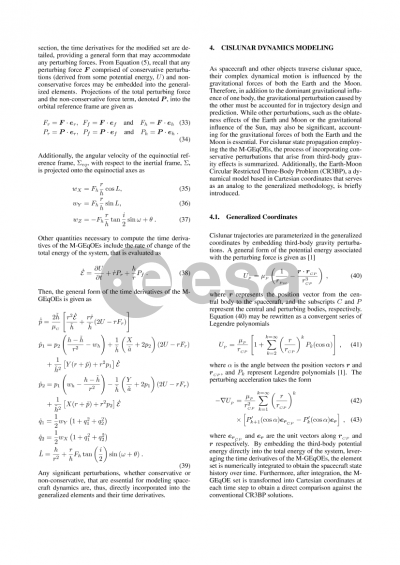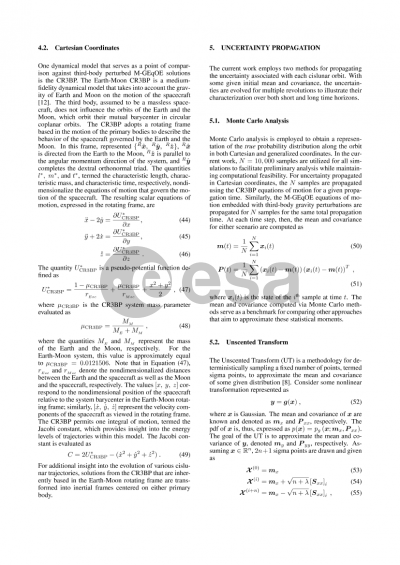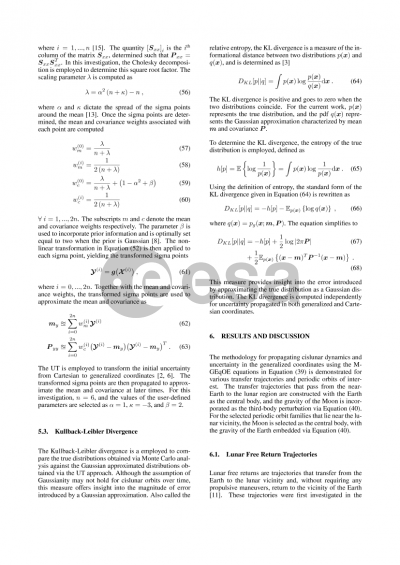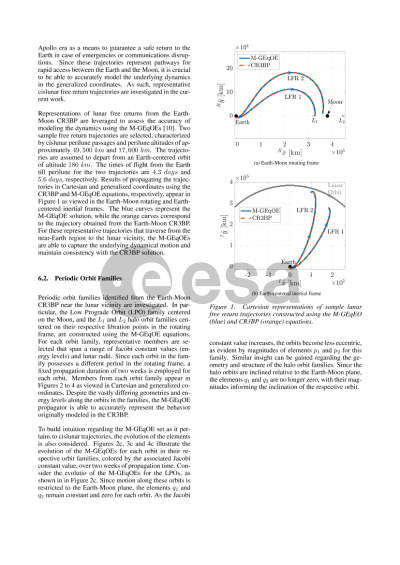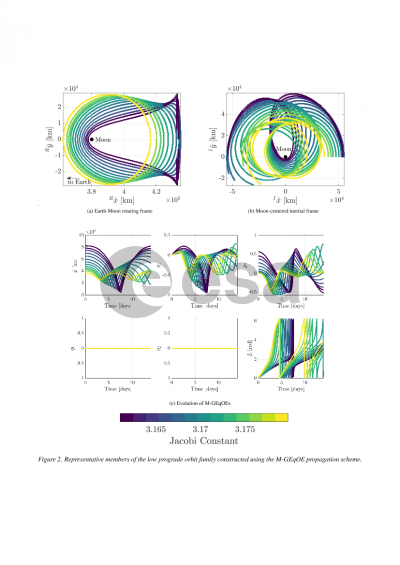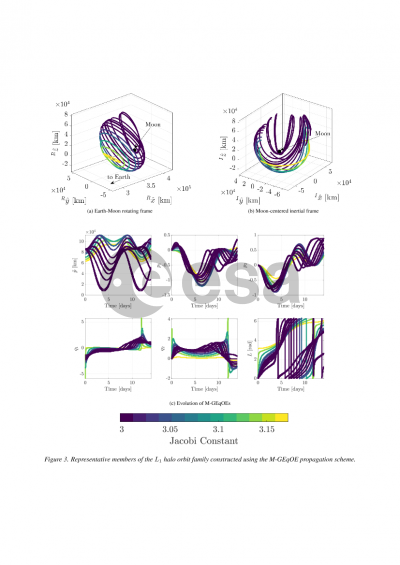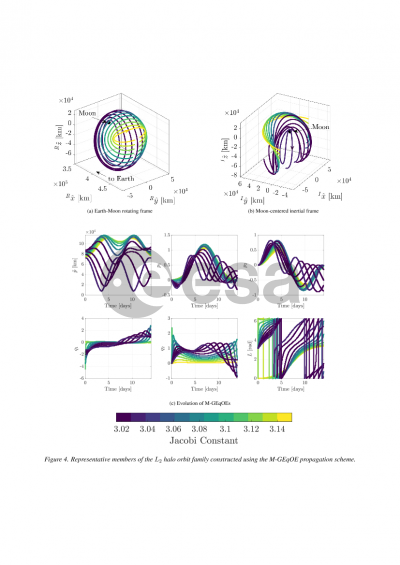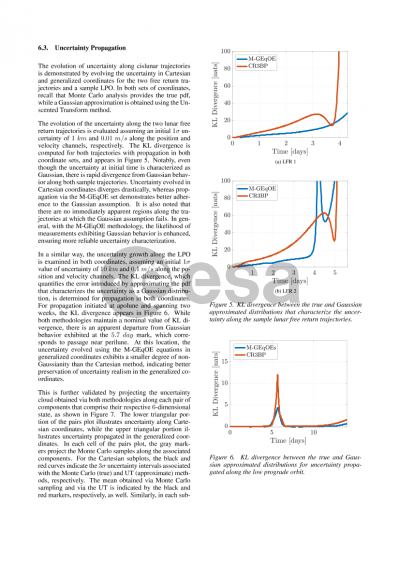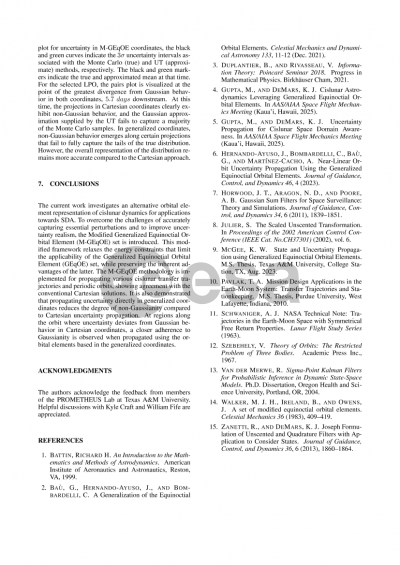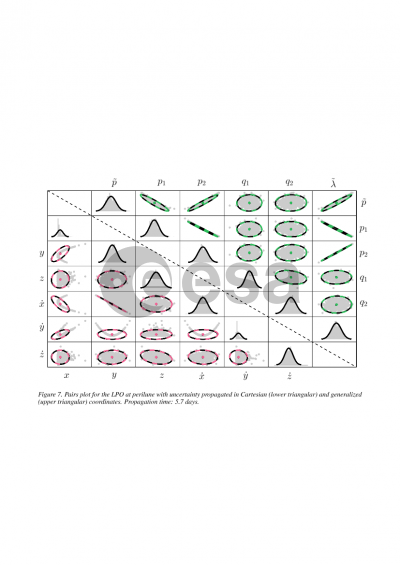Document details

Abstract
With the recent interest in missions to the vicinity of the Moon, cislunar space is poised to become the domain that sustains humanity's presence beyond the Earth. With this renewed interest, Space Domain Awareness (SDA), that has conventionally applied to the sub-geosynchronous orbit domain, will be necessary to support cooperative and safe operations in cislunar space as well. In contrast to SDA near the vicinity of the Earth, SDA in the broad volume of cislunar space presents unique challenges due to its vast size and significant distance from the Earth. In addition, the cislunar dynamical environment is characterized by non-Keplerian motion resulting from the non-negligible impact of lunar gravity perturbations. Thus, a dynamical model that captures the influence of both the Earth and the Moon, in addition to other perturbing forces, is necessary to represent cislunar dynamics.
A necessary component of SDA is modeling the uncertainty in the state of a spacecraft and its evolution over time. Assumptions of Gaussianity on the initial and downstream evolution of uncertainty in cislunar space are typically restrictive and do not represent the true behavior. As such, alternative techniques are needed to maintain the Gaussian assumption while preserving uncertainty realism. These techniques are of particular interest in order to obtain and maintain custody of both known and unknown objects in cislunar space.
The goal of this investigation is to explore alternative methodologies for modeling and propagating cislunar dynamics and uncertainty. In particular, the Generalized Equinoctial Orbital Elements (GEqOEs) are leveraged to both model cislunar trajectories and propagate uncertainty without loss of realism. The GEqOE set is characterized by the total energy of the system, allowing the direct inclusion of relevant perturbations that arise from conservative forces. For cislunar applications, in addition to the gravitational influence of the Earth, the gravity of the Moon is incorporated into the spacecraft dynamics. The utility of the GEqOE set for cislunar SDA is demonstrated for various cislunar orbits. For comparison, orbits from the Earth-Moon Circular Restricted Three-Body Problem (CR3BP) that lie near the vicinity of the Earth, the Moon, and around the CR3BP libration points are investigated. Orbits with complex geometries that traverse the cislunar volume extensively are explored as well. Modifications to the GEqEO set are also investigated for applications towards aperiodic trajectories, such as lunar free returns and transfer trajectories. Spacecraft states are propagated directly in the GEqOE coordinates, demonstrating agreement with conventional Cartesian propagation.
The Unscented Transform (UT) is leveraged to propagate and assess uncertainty in the GEqOE coordinates against Cartesian propagation. Measures of probability density functions are employed to quantify errors induced by the Gaussian approximations of the probability densities in both coordinates. Preliminary analysis demonstrates that propagating uncertainty directly in GEqOE coordinates yields significant improvements in accuracy. Notably, regions along the orbit where uncertainty deviates from Gaussian behavior in Cartesian coordinates exhibit a closer adherence to Gaussianity when represented in GEqOE coordinates. Thus, the established benefits of propagating uncertainty in element spaces are leveraged and, for cislunar applications, improved upon by increasing the dynamical model fidelity.
Preview
